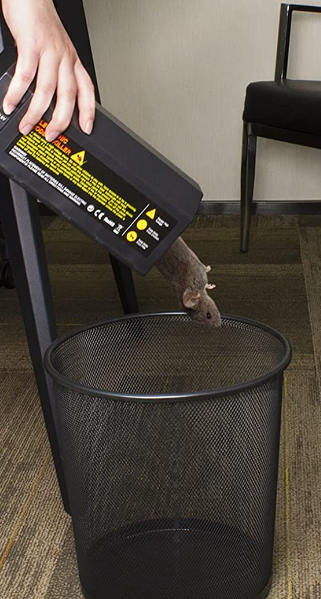Introduksjon
Vi skal tenke på den gamle, gale, fryktelige, inntrangsskyvende apparenget. Men mens blandingen av perspektiv med dyr og dyravling utvikler seg til misantropiske indenteringer i tomrommet for insektbekjempelse, blir disse mulighetene stadig mer ettertraktet. I denne artikkelen skal vi diskutere det etiske dilemma ved musfangering, hvorfor musfangering er gammeldags og dårlig, og begrunne alle fordeler som argumenterer for en mer menneskelig metode for å kontrollere mus.
Etikken bak musfangering
Men hva dette stiller er et mer komplisert etisk dilemma rundt ideen om dødleggende snarer. Snaring blir noen ganger sett på, og i noen kretser fordømt, av dyrevelferdshensyn angående metodene som brukes, men det brukes mye til skadekontroll. Disse enhetene kan forårsake at mus spiller ut i uker, så det bør tiltale til og med de mindre sadistiske blant oss når det gjelder synderne til disse krabyttene og inspirere til bedre måter å kvitte seg med dem. Likevel våkner den kollektive bevisstheten langsomt, og mange fordømmer nå praktisk skadekontroll som ikke skader dyr, men finner likevel løsninger på plager.
Ulemper ved klassiske musfeller
Gjennomsnittlige musfaller er forferdelige — virkelig kutte, kjærring — den slags som knuser, eller den med noen slags lim. Men kanskje det viktigste punktet er den store uakkuratheten i overveielser. Men sammenlignet med knusere — som skader dyret og setter det i en fryktelig ubehagelig posisjon og lar det dø på 3 dager av alvorlig tørst eller sult — er dette den mildere metoden for muskontroll. Dessuten er disse typene faller ikke velgeriske heller, noe som betyr at de ikke vil peke ut riktig målart, men kan ramme et husdyr eller villnatur som du ikke kan forutsi som en effekt.
Samtidig kan klassiske faller være nyttesløse på grunn av så mange menneskelige sikkerhets-/faktorer (CDC). Døde eller skadde mus trekker andre plager, utsetter for fryktelige lukter og oppretter bærere for sykdoms-utveksling og helsefare. Dette gjør behovet for å utvikle en mer human og mindre voldelig tilnærming til pestkontroll enda mer presserende.
Humane Mouse Traps — Alt du trenger å vite om disse lille dyrefangstene Relaterte varer:
Det finnes imidlertid mange humane kontrollmetoder for mus som unngår at de blir utsatt for frykt, stress og angest forbundet med tradisjonelle musefanger eller limfanger. Eller lær å bruke levende fanger (som du deretter frigir langt inn i skogen). De er enklest å bruke – bare legg den ned rundt musaktivitet.
Men du må sjå på nokre hindringsmetoder og avskeljande tiltak som kan brukes til å hindre at mus får plass i kroppen din. Hjemmeside eller bygningen din. Men me kan blokkere portene deira (og bruka nett av metall) og der er naturleg avskaringselementar (som peppermint olje) så eit hus utan mus er absolutt mogleg.
Hvordan lage en human musefange design
Dette er punktet der utforminga og typane av human musestang blir viktigast i utvelginga av Produkter Humane fjeller må installerast, vert vedlikeheld og følges opp med gjennomsnittleg helse og tryggleik for menneske og ikkje-menneskelege liv. Dei er lagde slik at dei kan drepa mus, og dei burde ikkje vera menneskelege.
Problemet med humane fanger for mus er imidlertid hvor godt de ulike typene faktisk fungerer. Hvis du prøver å fange mus humanitärt, vil du ønske å bruke en levendefangst musfelle som denne for å sikre at musene blir tatt i live, med liten sjanse for å slippe eller bli skadet under fangsten.
Hvordan bruk humane musfanger
Imidlertid, med humane musfaller må du sette opp og bruke dem godt for å få dem til å fungere på 100% allerede fra starten. Sett dem opp rundt matkilder, som der datamuser sannsynligvis vil gå forbi, og bruk ramper rundt en serie fall. Men de fanger også mus veldig ofte, og slipper dem friflytende — så lavt-stress og minst skade som mulig.
Slipp ikke de fanget mus nær mennesker eller hus der de kan komme inn igjen. For generell informasjon, sjekk lokale lover angående frigivelse eller fanging av fanget fisk eller vilt.
Å Trenere Lærere i å Humanisere Musfall Litt Bedre
Konkurrere med noen som blir holdt tilbake her fra 2014 bør sendes inn sammen med denne justeringen & utløp i lys av luftbasert innsamling, som er ingenting hemmelig & ueonetisk implementasjon av alternativer. Et ideelt vektstyringsprogram bør kanskje nyte en generell vei av å lære fra markedsføringsanbefalingene eksperter på lag bør gi og holde klar forekomster av høykvalitets praksis som støtter og veileder. Selvfølgelig kan opplæring løse mye av dette misforståelsen og også gjøre menneskelige feller mer aksepterte. Fremtiden for musefangst.
Endå betre Nyheter er at vitskapsmenn utviklar nye og potensielt betre teknologi for å fanga menneskelege mus. Den er blitt av ein svært avansert og teknisk utstyrd slik at den kan signalere eigaren når han er i ferd med å fange eit grisdyr ved hjelp av kloke klepsar eller ein grønnare løsning. Med endringar i sosiale holdningar, kan det ikkje vera for langt at det vert humanare praksis og humanare skadedyrskjemmingsmetoder.
Konklusjon
Det er selvfølgelig, best (nesten) pestkontroll er å gå rett over til den human musfelle-æra! En human løsning som vi alle kan streve mot, er bare å anerkjenne de morale implikasjonene ved tradisjonelle fangstmetoder, og å gjøre humane praksiser påkrevd for hvert dyr vi fanger. Humane feller er gode for dyrehald, men tillater også å bidra til å utvide habitatstrukturen slik at alle kan utvikle seg sammen for å bidra til en mer sivilisert samfunn. I denne spiriten av anti-undertrykkelse som anerkjenner og bekrefter den innfødte verdien av alle følelsesmessige vesener, er det helt sikkert på tide at vi redefinerer lokaler/kampus kontroll som individer og fellesskap.

 EN
EN








































 ONLINE
ONLINE